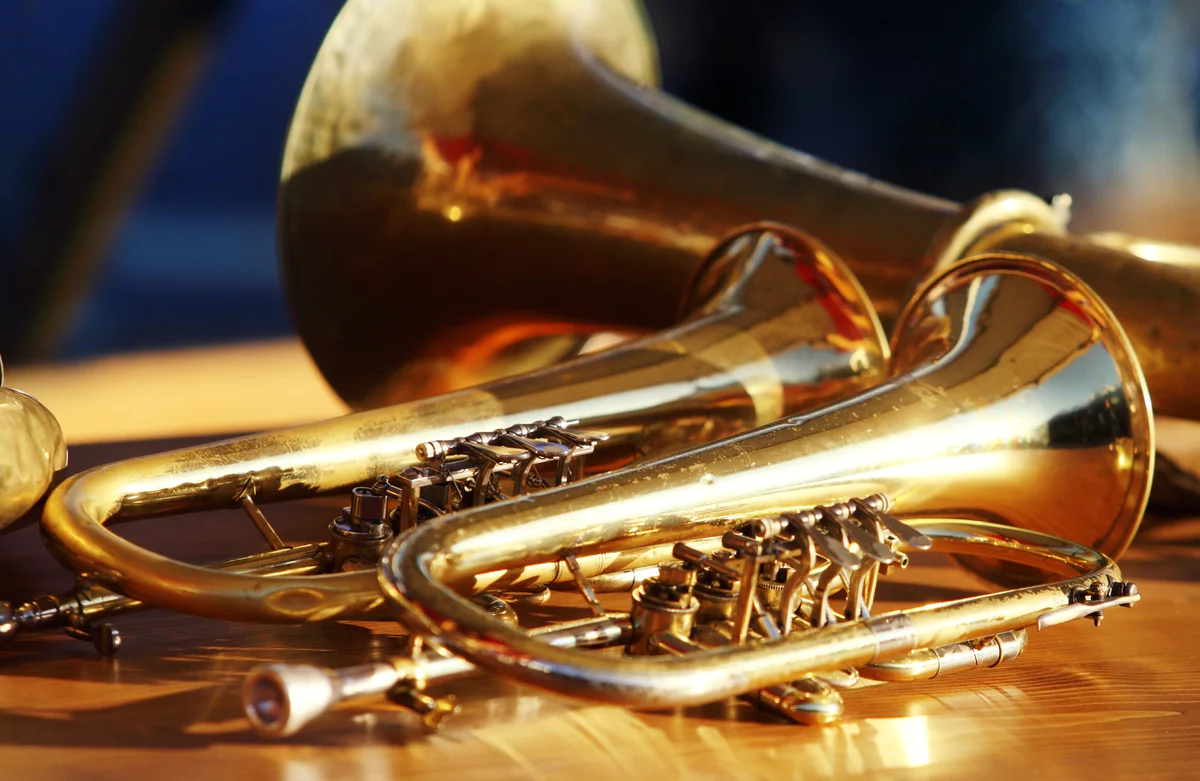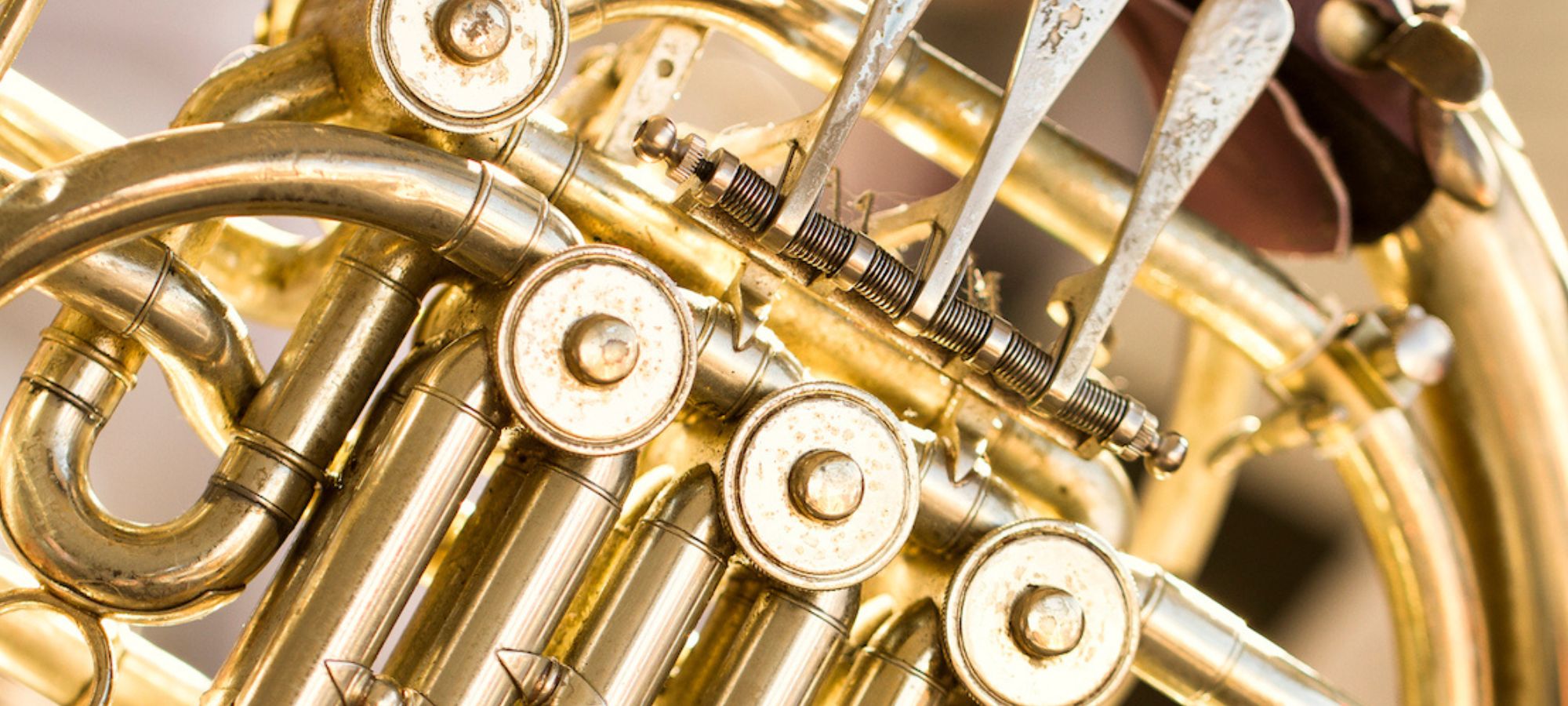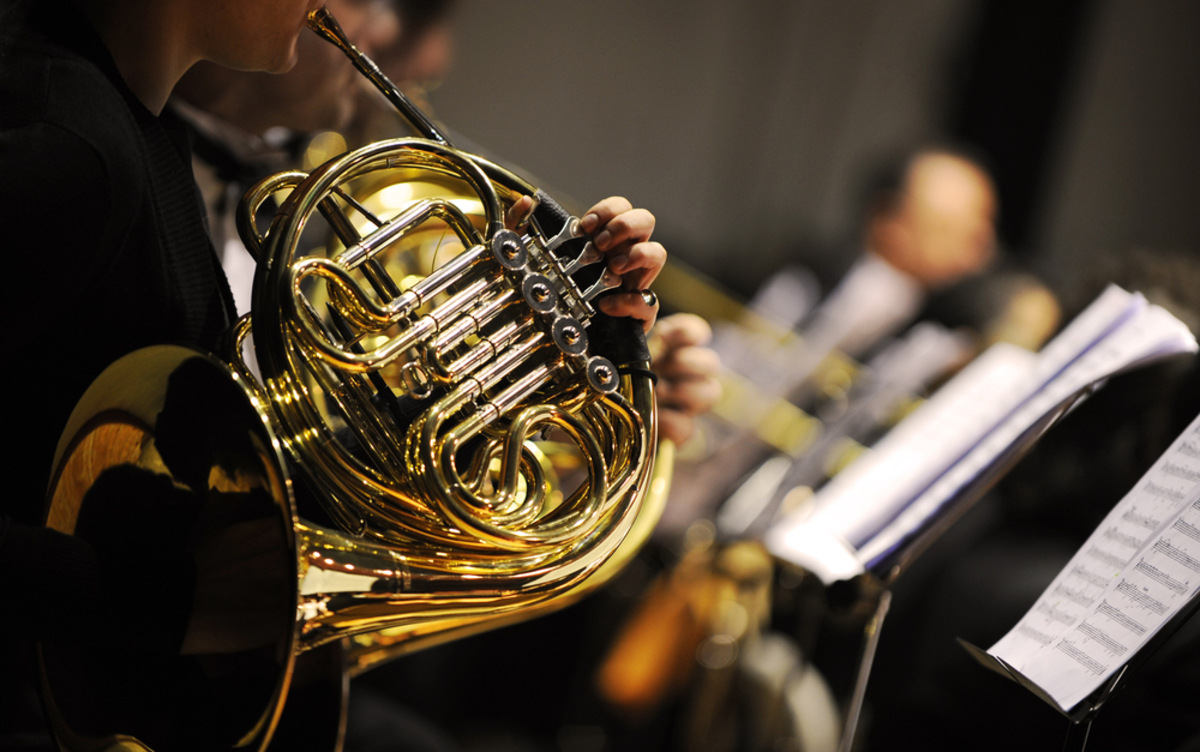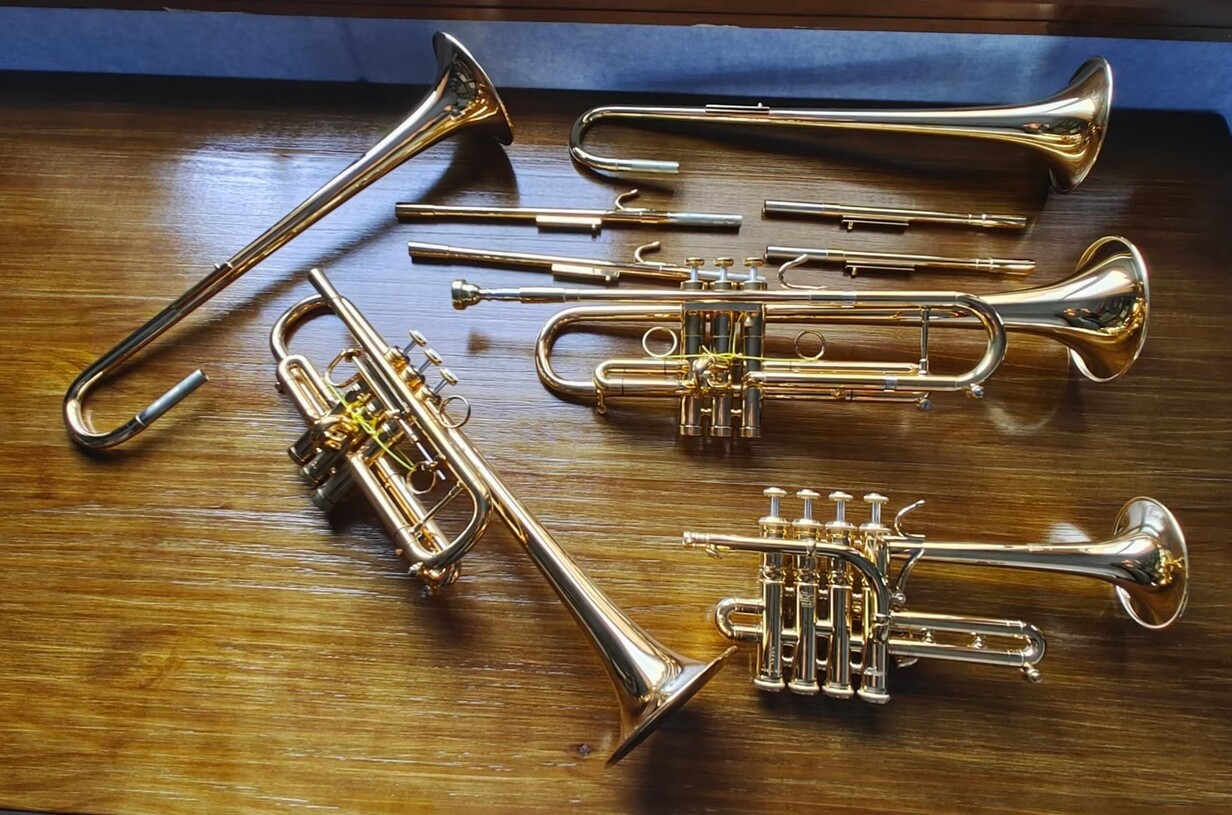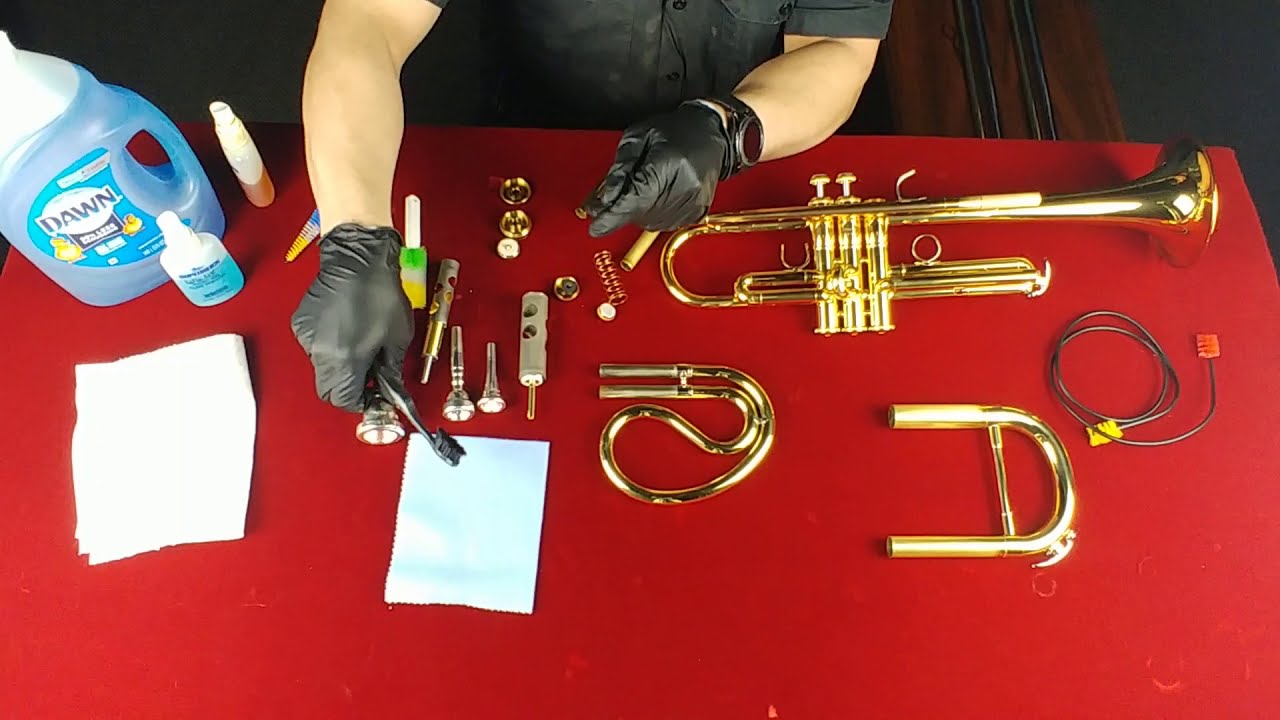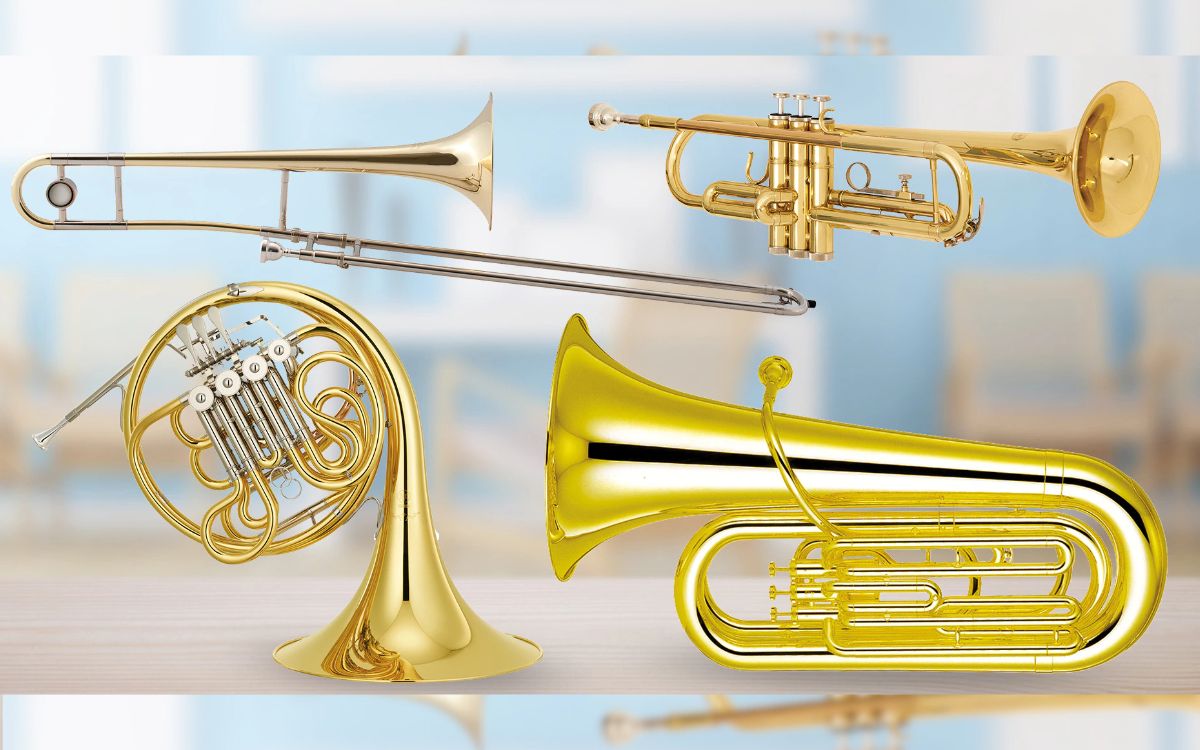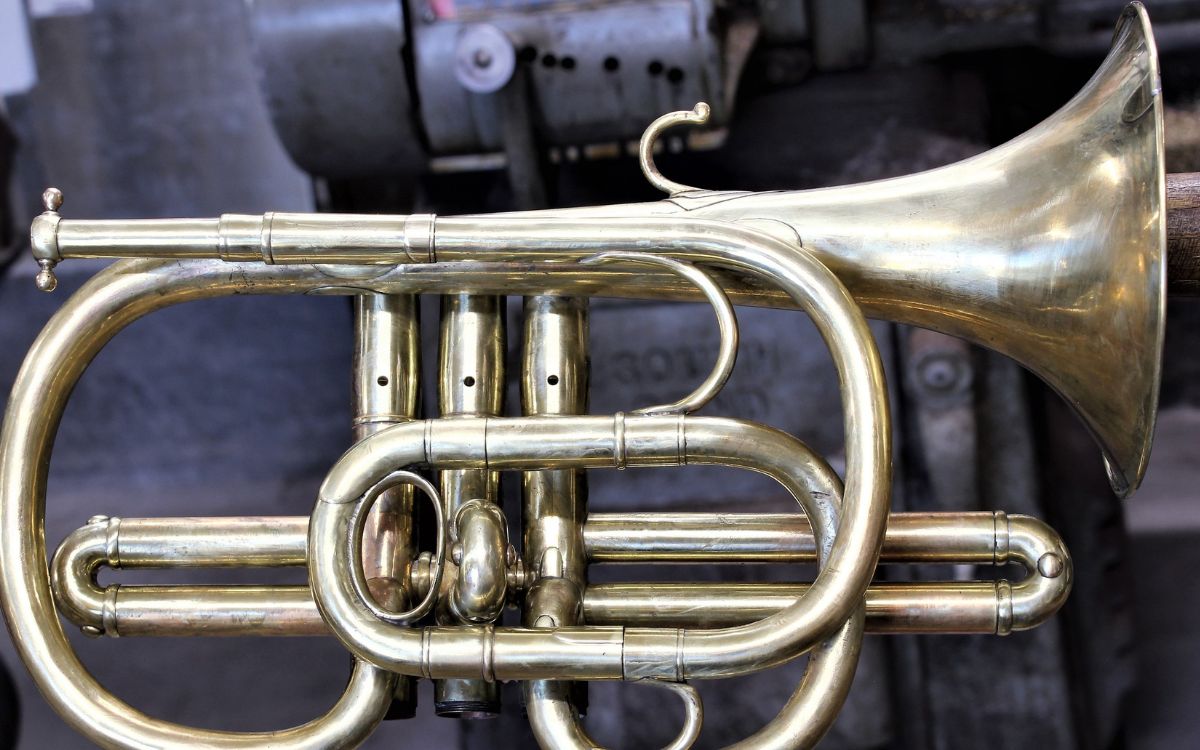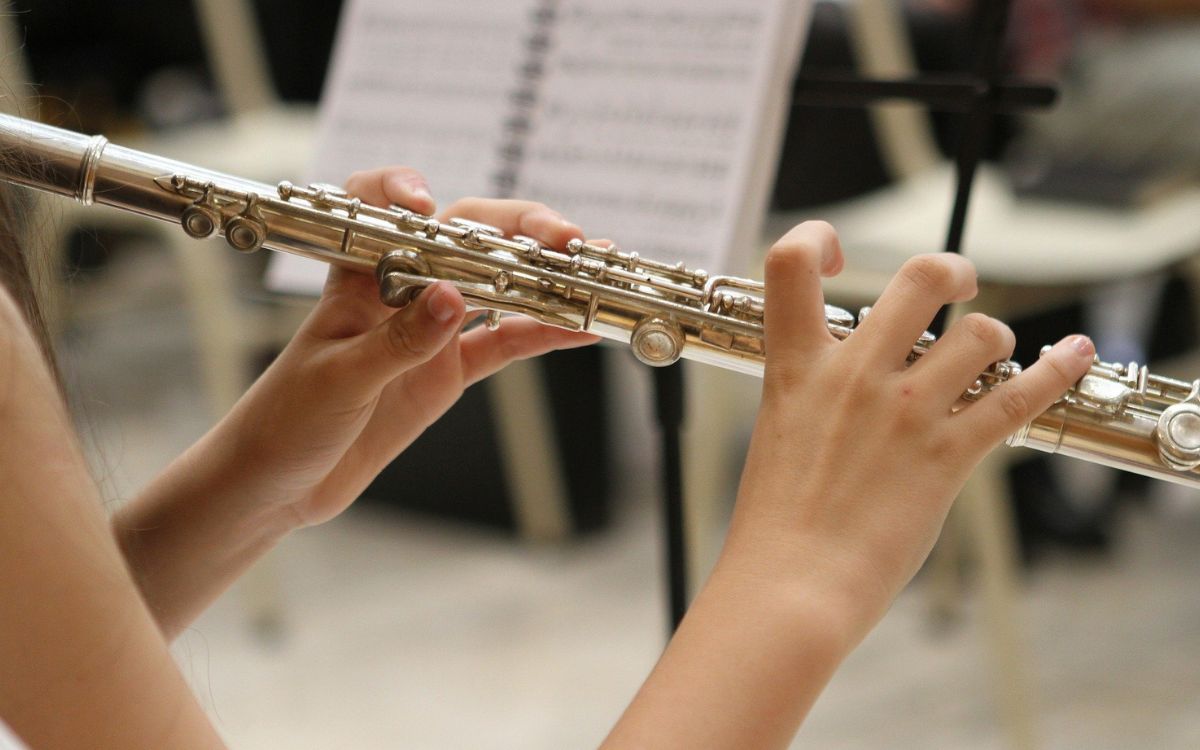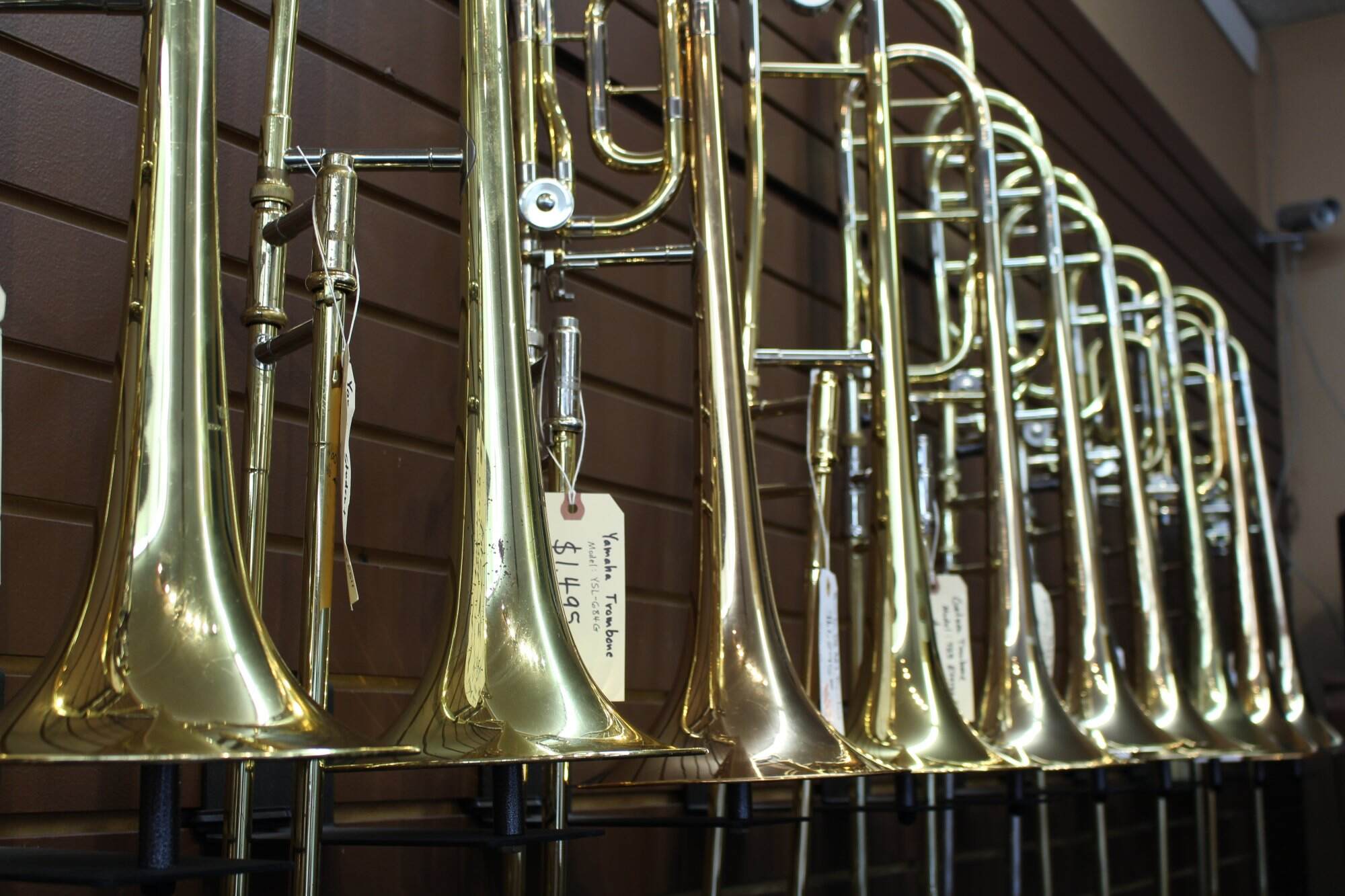Home>Instruments>Brass Instruments>How Does Temperature Affect Brass Instruments
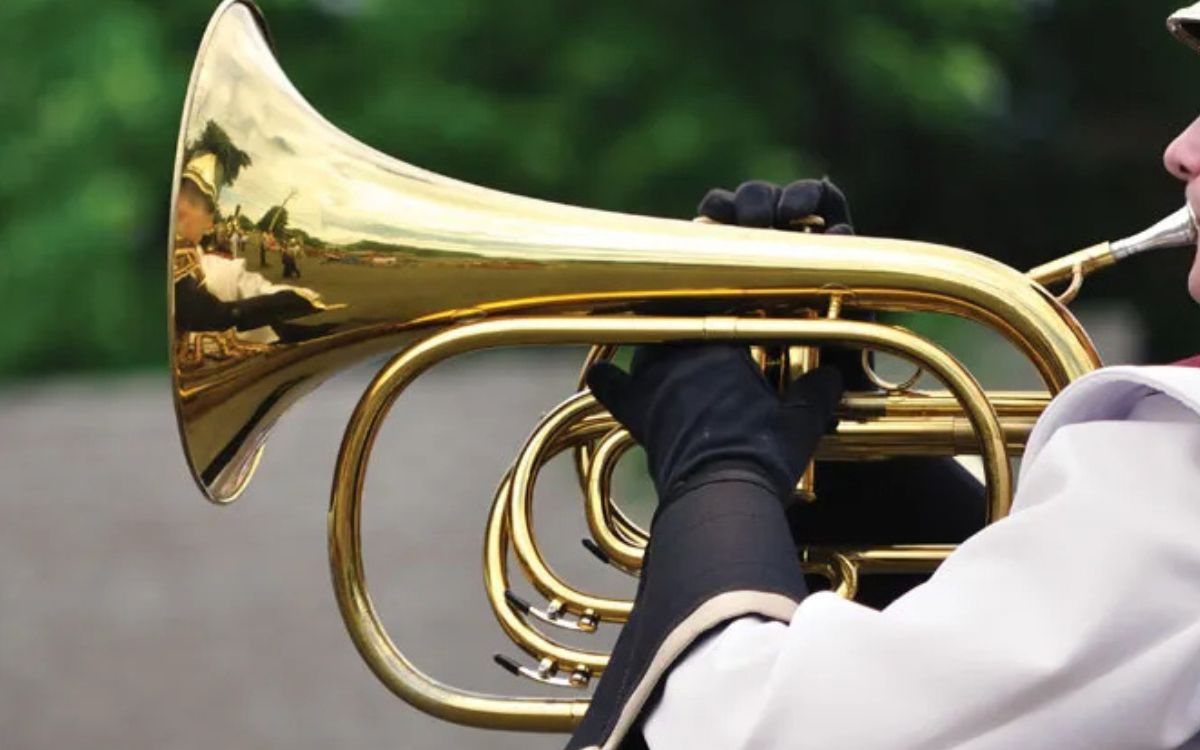

Brass Instruments
How Does Temperature Affect Brass Instruments
Published: January 15, 2024
Learn how temperature affects brass instruments and discover the impact it has on their sound and performance. Explore the relationship between temperature and brass instruments.
(Many of the links in this article redirect to a specific reviewed product. Your purchase of these products through affiliate links helps to generate commission for AudioLover.com, at no extra cost. Learn more)
Table of Contents
Introduction
Brass instruments have been captivating audiences for centuries with their rich, vibrant tones and intricate melodies. From trumpets and trombones to tubas and french horns, these instruments have a unique ability to create powerful and expressive music. However, what many people may not realize is that temperature plays a significant role in the performance and sound quality of brass instruments.
When we think of temperature, we often associate it with weather and seasonal changes. But for musicians, temperature can have a direct impact on their instruments. The materials used to make brass instruments, such as brass alloy and various metals, are highly sensitive to temperature fluctuations. Understanding how temperature affects these instruments is crucial for musicians, teachers, and even instrument technicians.
In this article, we will explore the various ways temperature can impact brass instruments. From changes in pitch and intonation to the effects on valve and slide performance, we will delve into how temperature can alter the overall playing experience. We’ll also discuss the expansion and contraction of brass when exposed to different temperatures and the challenges that moisture and condensation present.
Whether you are an aspiring musician, a seasoned professional, or simply interested in the science behind brass instruments, this article will provide you with valuable insights into the fascinating relationship between temperature and brass instrument performance. So, grab your metaphorical conductor’s baton and let’s dive into the world of temperature and brass instruments!
Properties of Brass Instruments
Before we delve into how temperature affects brass instruments, it’s important to understand the unique properties of these instruments. Brass instruments are made primarily of brass alloy, which is a combination of copper and zinc. This alloy is known for its malleability, durability, and resonance, making it an ideal choice for musical instruments.
The shape and design of brass instruments also contribute to their distinct sound. Most brass instruments consist of a long tube that is coiled or twisted into various shapes, with added valves or slides to change the length of the tubing. The mouthpiece, which is crucial for producing sound, is typically made of brass or silver-plated brass.
Brass instruments are classified as aerophones, meaning that sound is produced by vibrating air columns inside the instrument. The musician creates vibrations by buzzing their lips into the mouthpiece, causing the air column to vibrate and produce sound waves. The length of the tubing determines the pitch, with shorter tubing producing higher pitches and longer tubing producing lower pitches.
It’s also worth mentioning that brass instruments require regular maintenance and care to ensure optimal performance. This includes cleaning, lubricating valves and slides, and storing the instruments in appropriate cases to protect them from damage. Understanding these properties of brass instruments sets the foundation for understanding how temperature can affect them.
Understanding Temperature
Temperature is a measure of the average kinetic energy of the particles in a substance. In simple terms, it determines how hot or cold something is. Temperature is usually measured in degrees Celsius (°C) or Fahrenheit (°F) and can vary significantly depending on factors such as location, season, and time of day.
It’s important to note that temperature is not constant and can change both externally and internally. External temperature refers to the ambient temperature in the environment, while internal temperature refers to the temperature inside an object or body. For brass instruments, both external and internal temperature can have notable effects.
External temperature changes can occur due to weather conditions, such as sunny or cold days, as well as indoor temperature variations in different performing venues. Internal temperature changes can be caused by the musician’s body heat, breath, and the airflow within the instrument.
Understanding the relationship between temperature and brass instruments is crucial because temperature affects the physical properties of the instrument’s materials, such as brass alloy and metals. These materials expand or contract depending on the temperature, which in turn influences the instrument’s pitch, intonation, and overall performance.
By comprehending how temperature impacts brass instruments, musicians can make necessary adjustments to maintain consistent and accurate sound production. Instrument technicians can also ensure proper maintenance and repair to minimize temperature-related issues. Let’s explore the specific effects of temperature on brass instruments in the following sections.
The Effects of Temperature on Brass Instruments
Temperature plays a vital role in the performance and sound quality of brass instruments. As brass is highly sensitive to temperature fluctuations, changes in temperature can have significant effects on these instruments. Let’s explore some of the key ways in which temperature impacts brass instruments.
Expansion and Contraction of Brass: One of the primary effects of temperature on brass instruments is the expansion and contraction of the materials. When exposed to heat, brass expands, and when exposed to cold, it contracts. This expansion and contraction can cause changes in the shape and dimensions of the instrument’s tubing, valves, and slides. Consequently, it can alter the instrument’s overall pitch, intonation, and playability.
Changes in Pitch and Intonation: Temperature-induced expansion or contraction of brass instruments can lead to changes in pitch and intonation. When an instrument expands due to higher temperatures, the tubing length increases, resulting in a lower pitch. Conversely, when an instrument contracts due to colder temperatures, the tubing length decreases, causing a higher pitch. These fluctuations in pitch and intonation can be challenging for musicians, requiring adjustments in their playing technique and embouchure to maintain accurate pitch control.
Valve and Slide Performance: Temperature changes can also affect the performance of valves and slides in brass instruments. Valves, which are responsible for changing the length of the tubing, rely on smooth and precise movement. Temperature variations can cause the valves to become sticky or sluggish, hindering their ability to move freely. Similarly, slides, which adjust the length of the tubing, can experience resistance or difficulty moving when subjected to extreme temperatures.
Moisture and Condensation: Temperature fluctuations can also result in moisture and condensation within brass instruments. When warm humid air enters a cooler instrument, condensation can form inside, leading to potential issues such as waterlogged valves, slides, and tubing. Excessive moisture can affect the instrument’s responsiveness, hinder valve and slide movement, and even cause damage over time. Proper maintenance and regular cleaning are essential to prevent the accumulation of moisture and safeguard the instrument’s performance.
Understanding these effects of temperature on brass instruments is crucial for musicians and technicians alike. By being aware of these challenges, musicians can make necessary adjustments and be prepared for any temperature-related performance issues. Technicians can provide appropriate maintenance and repairs to minimize the impact of temperature on the instrument’s playability and longevity.
In the next sections, we will explore specific aspects related to temperature and brass instruments in greater detail, providing insights into managing temperature changes and optimizing instrument performance.
Expansion and Contraction of Brass
Understanding the expansion and contraction of brass materials is crucial to comprehending how temperature affects brass instruments. Brass is a metal alloy consisting primarily of copper and zinc, which have different coefficients of thermal expansion. This means that brass expands and contracts at different rates when exposed to changes in temperature.
When brass instruments are subjected to heat, such as when played in warm climates or under direct sunlight, the brass material expands. This expansion can cause the instrument’s tubing, valves, and slides to elongate or increase in size. On the other hand, when brass instruments are exposed to cold temperatures, the brass material contracts, resulting in a decrease in size and length of the tubing, valves, and slides.
The expansion and contraction of brass materials can have direct implications for the overall pitch, intonation, and playability of the instrument. As the tubing length increases or decreases due to temperature changes, the pitch of the instrument will be affected. Higher temperatures can lead to a lower pitch, while colder temperatures can cause the instrument to produce a higher pitch.
Additionally, the expansion and contraction of brass materials can impact the physical dimensions and alignment of valves and slides. When the brass expands or contracts, the valves and slides may not fit as precisely as they should. This can result in sticky or sluggish valve and slide movements, affecting the instrument’s playability and responsiveness.
To mitigate the effects of expansion and contraction, musicians and technicians must be aware of the potential challenges and make adjustments as necessary. This includes making pitch adjustments based on temperature fluctuations, ensuring proper alignment and lubrication of valves and slides, and maintaining regular instrument maintenance and repairs.
Instrument design can also play a role in managing the effects of expansion and contraction. Some brass instruments, such as trombones and tubas, incorporate adjustable slides to compensate for temperature-related changes in pitch. These slides can be adjusted to lengthen or shorten the tubing to maintain accurate pitch control.
In summary, understanding the expansion and contraction of brass materials is key to understanding the impact of temperature on brass instruments. By recognizing how temperature-induced changes affect the instrument’s pitch, intonation, and mechanical components, musicians and technicians can take appropriate measures to optimize the instrument’s performance in various temperature conditions.
Changes in Pitch and Intonation
Temperature fluctuations can have a significant impact on the pitch and intonation of brass instruments. As mentioned earlier, brass instruments are composed of materials that expand or contract in response to changes in temperature. These changes in size and length directly affect the instrument’s pitch and intonation.
When brass instruments are exposed to higher temperatures, the materials, including the tubing, valves, and slides, expand. This expansion increases the length of the tubing, effectively making it longer. As a result, the instrument produces a lower pitch. Conversely, when brass instruments are exposed to colder temperatures, the materials contract, causing the tubing to become shorter. This leads to a higher pitch being produced by the instrument.
These fluctuations in pitch can pose challenges for musicians. Musicians must adapt their embouchure and playing technique to compensate for the changes in pitch caused by temperature variations. Playing a brass instrument in a warmer environment may require loosening the embouchure and blowing with slightly less force to prevent the pitch from going too low. Conversely, playing in a colder environment may require tighter embouchure and increased air support to maintain the desired pitch.
Intonation, which refers to the accuracy of playing in tune with other instruments or a reference pitch, is also affected by temperature changes. When the tubing length of a brass instrument increases due to higher temperatures, the intonation tends to flatten. On the other hand, when the tubing length decreases due to colder temperatures, the intonation tends to sharpen.
To compensate for these changes in intonation, musicians may need to make adjustments to their playing technique or utilize alternate fingerings or slide positions. This allows them to achieve proper intonation and blend with other musicians in an ensemble setting, regardless of the temperature conditions.
It’s important for musicians to be aware of how temperature affects the pitch and intonation of their instruments. By regularly practicing and performing in different temperature environments, musicians can develop the adaptability and control necessary to maintain consistent pitch and intonation across varying conditions.
Furthermore, instrument technicians can provide valuable insights and services to musicians to help mitigate pitch and intonation issues caused by temperature fluctuations. They can assist in ensuring the proper alignment and functionality of valves and slides, as well as recommend adjustments specific to the instrument’s design and condition.
By understanding and addressing the changes in pitch and intonation that occur due to temperature variations, musicians can maintain a consistent and accurate tone, enabling them to deliver captivating and harmonious performances across a range of temperatures and environments.
Valve and Slide Performance
Temperature changes can significantly impact the performance of valves and slides in brass instruments. Valves and slides are crucial components that allow musicians to change the length of the tubing, altering the instrument’s pitch and producing different notes. However, temperature variations can affect the smooth operation and responsiveness of these mechanisms.
When brass instruments are exposed to higher temperatures, the brass material expands. This expansion can cause valves to become sticky or sluggish. As a result, the valves may not move as freely or smoothly as they should, leading to challenges in playing fast passages or executing quick valve combinations. This lack of responsiveness can affect the overall playability and musical expression of the instrument.
Similarly, slides in brass instruments can be affected by temperature changes. When the instrument is exposed to heat, the slides may become more difficult to move due to expanded brass tubing. On the other hand, in colder temperatures, the slides may contract, making them easier to push in or pull out but potentially causing issues with tuning and intonation.
To mitigate the effects of temperature on valve and slide performance, musicians must be proactive in maintaining their instruments. Regular cleaning and lubrication of valves and slides can ensure optimal functionality and prevent them from sticking or becoming sluggish. Additionally, storing the instrument in a suitable case, away from extreme temperatures or humidity, can help minimize the impact of temperature changes on these components.
Instrument technicians can play a vital role in optimizing valve and slide performance in brass instruments. They can assess the condition of the instrument, identify any issues related to temperature-induced changes, and provide necessary repairs or adjustments. This may include re-alignment of valves and slides to ensure smooth movement, replacement of worn-out parts, or applying appropriate lubricants for improved performance.
Furthermore, musicians can take proactive measures during their playing to optimize valve and slide performance. Regularly checking and maintaining proper alignment of slides, using correct fingerings and slide positions, and incorporating efficient valve techniques can help overcome any challenges caused by temperature variations.
Awareness of temperature-related changes in valve and slide performance allows musicians to adapt their playing technique as needed. By developing a sensitivity to the instrument’s response in different temperature conditions and making necessary adjustments, musicians can ensure that their brass instruments continue to perform at their best, even in the face of temperature-related challenges.
Moisture and Condensation
Moisture and condensation are common challenges that brass musicians face, particularly when it comes to temperature changes. The interaction between warm, moisture-filled air and cooler instrument surfaces can lead to the formation of condensation inside the instrument, posing risks to its performance and longevity.
When warm air enters a brass instrument, the cooler internal surfaces cause the moisture in the air to condense and form droplets. This condensation can accumulate in various parts of the instrument, such as the tubing, valves, and slides. Excessive moisture can lead to several issues.
Firstly, waterlogged valves, slides, and tubing can impede the instrument’s responsiveness and hinder the smooth operation of these components. Sticky or sluggish valves and slides can make it difficult for the musician to execute fast passages or achieve quick transitions between notes. Additionally, excessive moisture can cause corrosion and damage to the brass materials over time, compromising the instrument’s overall performance and longevity.
Moreover, the accumulation of moisture can affect the instrument’s resonance and tone quality. When the airflow encounters droplets of condensation inside the instrument, it can cause disruptions and turbulence, resulting in a less focused and less vibrant sound. This can negatively impact the musician’s ability to produce the desired tone and musical expression.
To manage the challenges posed by moisture and condensation, musicians must implement effective maintenance practices. Regular cleaning and drying of the instrument’s interior can help prevent the accumulation of moisture and prolong the instrument’s lifespan. This includes disassembling the instrument, using cleaning tools and brushes to remove moisture from the tubing, and drying the valves and slides thoroughly before reassembly.
In addition to regular cleaning, musicians can also take preventive measures to minimize moisture-related issues. During playing sessions, it is recommended to warm up the instrument gradually to minimize the temperature disparity that leads to condensation. Similarly, when transitioning from colder to warmer environments, gradually acclimating the instrument to the new temperature can help reduce condensation formation.
Proper storage is also crucial in managing moisture-related challenges. Storing the instrument in a well-ventilated case and utilizing moisture-absorbing materials, such as desiccant packs or moisture-control systems, can help maintain optimal humidity levels and prevent excessive condensation.
Instrument technicians can provide valuable assistance in addressing moisture-related issues. They can perform thorough inspections, identify areas of concern, and recommend appropriate cleaning and maintenance techniques. In some cases, technicians may also suggest the use of water keys or drainage systems to facilitate the removal of excess moisture.
By managing moisture and condensation effectively, musicians can maintain the playability, sound quality, and longevity of their brass instruments. Regular maintenance, proper drying techniques, and preventive measures can ensure that excessive moisture does not dampen the musician’s performance.
Tips for Managing Temperature Changes
Managing temperature changes is essential for brass musicians to maintain consistent performance and optimize their instrument’s playability. Here are some tips to help manage temperature fluctuations effectively:
- Acclimate the instrument: When moving from one temperature extreme to another, it’s crucial to allow the instrument to acclimate gradually. This can be done by keeping the instrument in its case and allowing it to adjust to the new temperature over a period of time. Avoid exposing the instrument to sudden temperature changes, as this can cause rapid expansion or contraction of the materials.
- Monitor playing environment: Be aware of the temperature and humidity levels in the playing environment. Extreme temperature variations can have a significant impact on the instrument’s performance. Consider using a hygrometer to measure humidity levels and adjust playing technique accordingly.
- Warm up the instrument: Before playing, take the time to warm up the instrument gradually. Start with soft tones and slow scales to allow the instrument to adjust to your body temperature. This helps minimize the effects of temperature changes on the instrument’s pitch and intonation.
- Proper instrument storage: Store your brass instrument in a suitable case that offers protection from extreme temperatures and humidity levels. Look for cases with insulation features to help regulate temperature and minimize the impact of temperature changes on the instrument.
- Regular maintenance: Schedule routine maintenance for your brass instrument to ensure it is in optimal condition. This includes cleaning the instrument regularly to remove moisture and debris, lubricating valves and slides, and having it checked by a professional instrument technician to identify and address any temperature-related issues.
- Instrument adjustments: Work closely with an instrument technician to make necessary adjustments to your instrument to compensate for temperature-related issues. This may include realigning valves and slides, selecting alternate fingerings or slide positions, or utilizing additional accessories designed to mitigate the effects of temperature changes.
- Monitor and adapt: Pay attention to how temperature changes affect your instrument’s playability and sound. Adjust your playing technique as needed to compensate for any pitch, intonation, or responsiveness issues. Developing a sensitivity to these changes will help you maintain consistency and adapt to different temperature conditions.
- Use protective materials: Consider using insulating materials or accessories designed to reduce the impact of temperature changes on the instrument. These may include thermal wraps or covers that help regulate temperature and protect the instrument from extreme weather conditions.
By implementing these tips and maintaining a proactive approach towards managing temperature changes, brass musicians can ensure optimal performance and longevity of their instruments. Working in harmony with the instrument’s materials and understanding its unique response to temperature variations will enhance the musician’s ability to create beautiful music across a range of environmental conditions.
Conclusion
Temperature plays a significant role in the performance and sound quality of brass instruments. Understanding how temperature affects these instruments is crucial for musicians, teachers, and instrument technicians alike. From the expansion and contraction of brass materials to the changes in pitch, intonation, and valve and slide performance, temperature fluctuations can present unique challenges.
By being aware of these challenges and implementing proactive measures, musicians can maintain consistent performance and optimize their instrument’s playability. Acclimating the instrument to new temperature environments, monitoring the playing environment, warming up the instrument gradually, and storing it properly are some essential tips for managing temperature changes.
Regular maintenance, including cleaning and lubricating valves and slides, is essential for preventing issues related to temperature-induced moisture and condensation. Monitoring the instrument’s response to temperature changes and making necessary adjustments to playing technique or instrument settings will ensure optimal pitch, intonation, and responsiveness.
Collaboration with instrument technicians can provide valuable insights and assistance in addressing temperature-related challenges. Technicians can provide regular maintenance, make necessary adjustments, and recommend solutions specific to the instrument’s design and condition.
Ultimately, managing temperature changes is about maintaining a harmonious relationship between the musician and the instrument. By understanding and adapting to the effects of temperature, musicians can continue to create captivating music, regardless of the environmental conditions they face.
With the knowledge gained from understanding temperature’s impact on brass instruments, musicians can navigate the challenges and opportunities presented by different temperature conditions. Through adaptation, proper maintenance, and an appreciation for the science behind brass instruments, musicians can continue to captivate audiences and express their artistry with finesse and precision.


